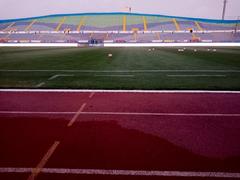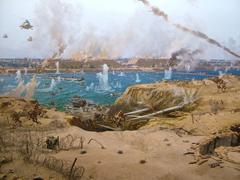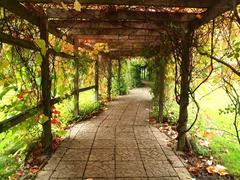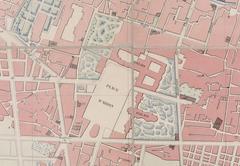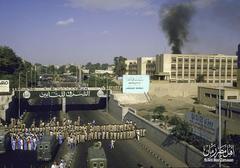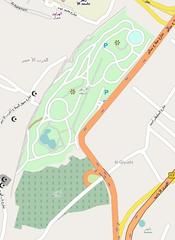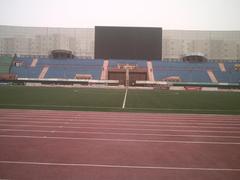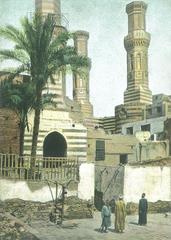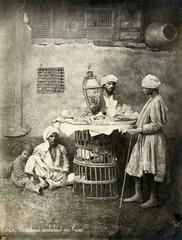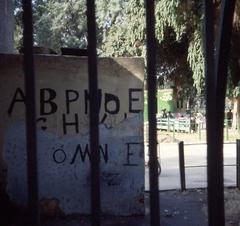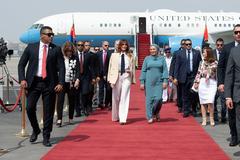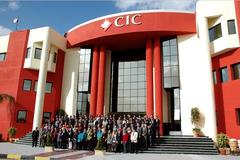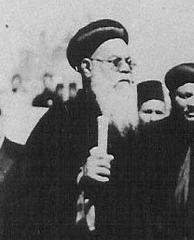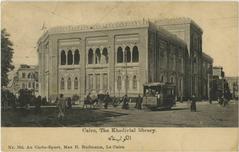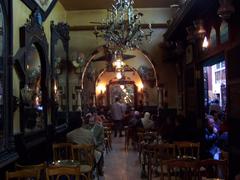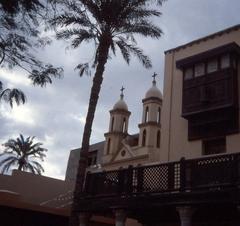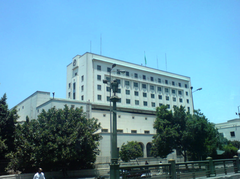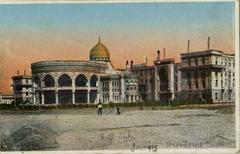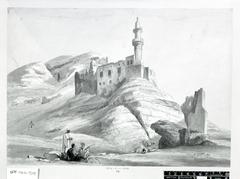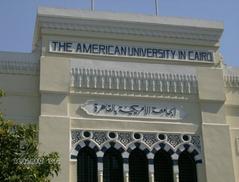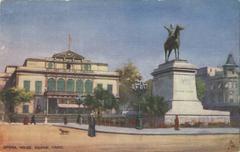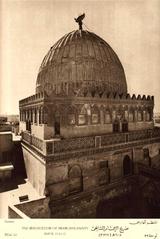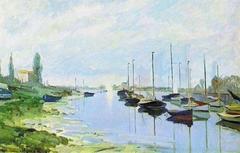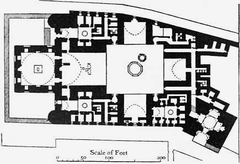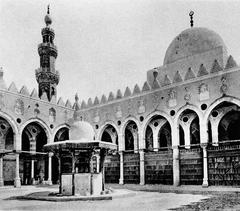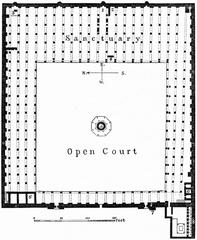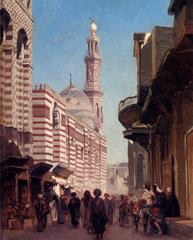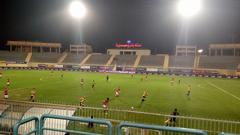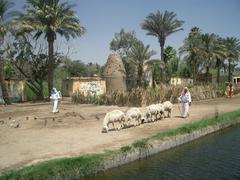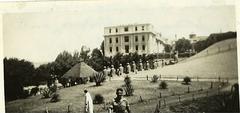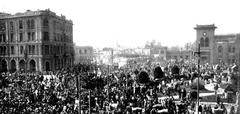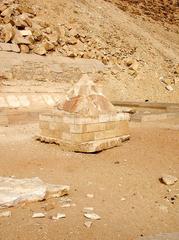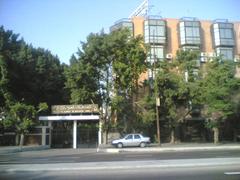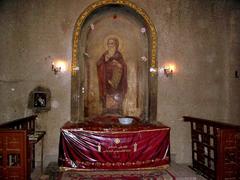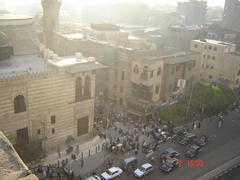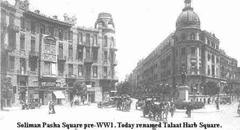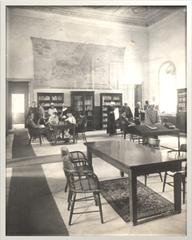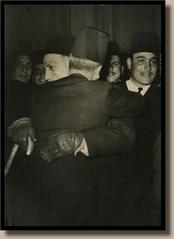Comprehensive Guide to Visiting Dar Al Salam Street, Al Nozha, Egypt
Date: 23/07/2024
Introduction
شارع دار السلام, located in the Al Nozha district of Cairo, Egypt, is a vibrant street steeped in historical and cultural significance. As part of the greater Heliopolis region, an ancient city known for its sun temples and as a center of learning and culture in ancient Egypt, شارع دار السلام offers a unique window into Cairo’s past (Britannica: Heliopolis). Over the centuries, this area has evolved through various historical epochs, including the Islamic conquest in the 7th century CE, which integrated it into Cairo’s expanding urban landscape (Met Museum: Islamic Cairo). The Ottoman period further contributed to its development with the introduction of new architectural styles and urban planning concepts (Britannica: Cairo). Today, شارع دار السلام stands as a testament to this rich historical tapestry, featuring a blend of traditional and modern architecture, vibrant markets, and numerous cultural and religious institutions. This comprehensive guide aims to explore the historical, cultural, and social dimensions of شارع دار السلام and provide practical information for visitors, ensuring an enriching and memorable experience.
Table of Contents
Historical Background
Early History
شارع دار السلام, located in the Al Nozha district of Cairo, Egypt, has a rich and multifaceted history that dates back to ancient times. The area that is now Al Nozha was once part of the greater Heliopolis region, an ancient city known for its sun temples and as a center of learning and culture in ancient Egypt. Heliopolis, or “City of the Sun,” was one of the oldest cities of ancient Egypt, with its origins tracing back to the Old Kingdom (c. 2686–2181 BCE). The region was a focal point for worship of the sun god Ra, and it housed the Great Temple of Ra, which attracted pilgrims and scholars from across the ancient world (Britannica: Heliopolis).
Islamic Influence
With the advent of Islam in Egypt in the 7th century CE, the region underwent significant transformations. The Islamic conquest led to the establishment of new cities and the expansion of existing ones. Cairo, founded in 969 CE by the Fatimid dynasty, became the new capital and a major center of Islamic culture and learning. Al Nozha, including شارع دار السلام, became integrated into the expanding urban landscape of Cairo. The area saw the construction of mosques, madrasas (Islamic schools), and other religious and civic buildings, reflecting the Islamic architectural and cultural influence (Met Museum: Islamic Cairo).
Ottoman Period
During the Ottoman period (1517–1798), Cairo continued to grow, and the Al Nozha district, including شارع دار السلام, saw further development. The Ottomans introduced new architectural styles and urban planning concepts, which influenced the layout and appearance of the area. The period was marked by the construction of numerous public buildings, including hammams (public baths), caravanserais (inns), and markets, which contributed to the vibrant urban life of the district (Britannica: Cairo).
Modern Era
In the 19th and 20th centuries, Egypt underwent significant modernization efforts, particularly under the rule of Muhammad Ali Pasha and his successors. These efforts included the construction of new infrastructure, such as roads, bridges, and public buildings, which transformed the urban landscape of Cairo and its districts, including Al Nozha. شارع دار السلام became an important thoroughfare, connecting various parts of the district and facilitating the movement of people and goods. The area saw the construction of modern residential and commercial buildings, reflecting the architectural styles and urban planning concepts of the time (Britannica: Muhammad Ali Pasha).
Cultural Significance
Architectural Heritage
The architectural heritage of شارع دار السلام is a reflection of the various historical periods and cultural influences that have shaped the area. The street is lined with buildings that showcase a mix of architectural styles, from traditional Islamic and Ottoman designs to modernist and contemporary structures. Notable examples include historic mosques with intricate minarets and domes, as well as modern residential and commercial buildings that reflect the evolving urban landscape of Cairo. This architectural diversity adds to the unique character of the street and makes it a fascinating destination for visitors interested in history and architecture (Archnet).
Preservation Efforts
In recent years, there have been efforts to preserve and restore the historical and cultural heritage of شارع دار السلام and the broader Al Nozha district. These efforts are aimed at protecting the area’s architectural landmarks and cultural institutions, as well as promoting sustainable urban development. Preservation initiatives often involve collaboration between government agencies, local communities, and international organizations, and they play a crucial role in maintaining the historical integrity and cultural vibrancy of the area (WMF: World Monuments Fund).
Visitor Information
Visiting Hours
Most historical sites and markets are open from 9 AM to 5 PM daily.
Tickets
Entry to public areas is generally free, but some historical sites may charge a nominal fee.
Travel Tips
- Transportation: Use local transportation options like taxis or buses to navigate the area. It’s advisable to carry a map or use a GPS-enabled device.
- Nearby Attractions: Explore nearby attractions such as the Al Nozha Park, the Great Mosque of Cairo, and the Heliopolis district.
- Accessibility: The area is generally accessible, but some historical sites may have limited facilities for visitors with disabilities.
Special Events and Guided Tours
شارع دار السلام often hosts special cultural events and festivals that are worth attending. Guided tours are available and provide deeper insights into the history and significance of the area. Check local listings and tourism websites for the latest information on events and tours.
Photographic Spots
For photography enthusiasts, شارع دار السلام offers numerous picturesque spots. Capture the intricate details of the historic mosques, the bustling market scenes, and the blend of old and new architecture.
FAQ
- What are the best times to visit شارع دار السلام?
- The best times to visit are during the cooler months from October to April.
- Are there guided tours available?
- Yes, guided tours are available and can be booked through local tour operators or online.
- Is شارع دار السلام safe for tourists?
- Yes, the area is generally safe for tourists, but it’s always advisable to stay aware of your surroundings.
Conclusion
شارع دار السلام in Al Nozha, Egypt, encapsulates the essence of Cairo’s dynamic history and vibrant culture. From its ancient origins in the Heliopolis region to its significance during the Islamic and Ottoman periods, the street has continually evolved, reflecting the diverse influences that have shaped it over millennia (Britannica: Muhammad Ali Pasha). Today, شارع دار السلام remains a bustling thoroughfare, rich with architectural heritage and cultural vibrancy. Efforts to preserve its historical landmarks and promote sustainable urban development ensure that it continues to be a vital part of Cairo’s urban fabric (WMF: World Monuments Fund). For visitors, the street offers a unique blend of historical exploration, cultural immersion, and modern conveniences, making it a must-visit destination. Whether you’re strolling through its markets, admiring the architectural diversity, or participating in local cultural events, شارع دار السلام promises a captivating journey through time and tradition. Don’t forget to check out related posts, download our mobile app Audiala, and follow us on social media for the latest updates and travel tips.
